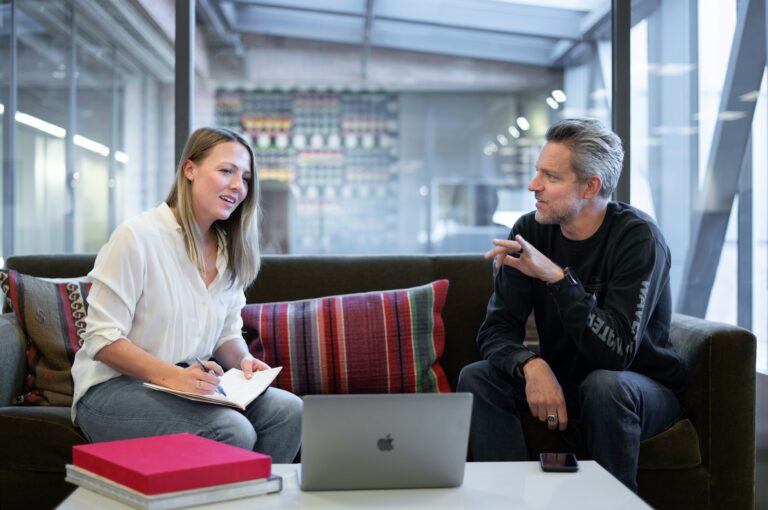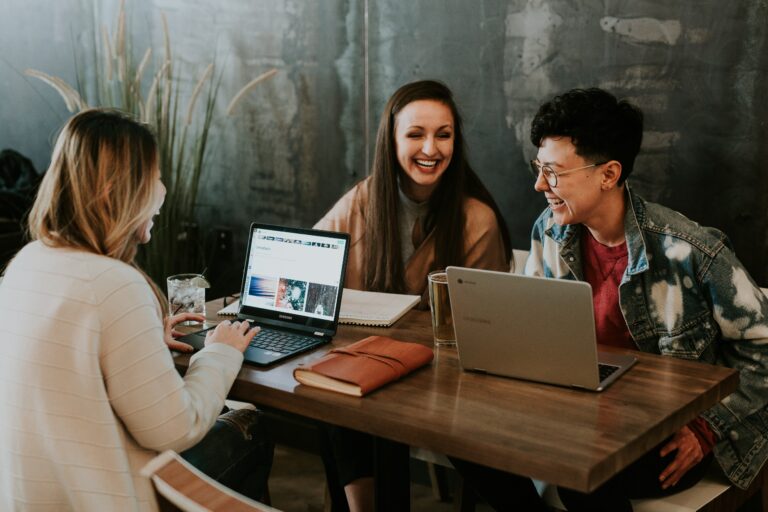The talent shortage is no joke. Millions of people are quitting their jobs to reorient their lives and careers into situations that better support their needs. Every circumstance is different, but the most common reasons are for more money, better managers, greater flexibility, aligned values and/or more interesting work. Combine this shift with the increase in early retirements and the rise of women opting out of the workforce, and so begins the “War for Talent”.
In this environment, the best advice I can give a company or recruiter is to “meet people where they are”. We must intentionally bridge the gap between our own expectations and their values, needs and desires.
Any company or recruiter that doesn’t adapt to this new reality, is going to lose talent to the companies that do. And with most interviews being done over video now, it has never been easier for people to shop around.
Here are six tips that I use to be a competitive recruiter in this charged up economy, where candidates are calling the shots.
Improve Your Onboarding Process and Then Leverage It During the Interviews
We’re in the brave, new world of remote work and your outdated onboarding process is not going to cut it. An experienced professional knows how important the onboarding is because it’s the first taste of your company culture. Everything else will live and die by it.

Take the time to reevaluate your onboarding process and make sure it’s top notch. Ditch the old, outdated Word Docs and switch to screen-recording your processes with Loom. Build a comprehensive library of videos to help remote workers get ramped up easier.
You should also consider implementing software like Trainual.
This is a new, highly rated tool that helps you build a digital playbook for every process, policy, and procedure. Check it out. It makes an old Word Doc feel like dial up internet.
Your goal should be to make it easy to “plug in” new hybrid & remote workers easily so that they can hit the ground running without much direction.
Once everyone is on the same page about how someone should be onboarded, start leveraging this A+ process as a SELLING POINT during interviews. It doesn’t need to be talked about during the first round, but at some point, candidates WILL appreciate hearing about it.
We all know that stepping into an unstructured, remote environment will be painful experience. Been there, done that and no one wants to go back. By telling candidates that you have a plan for them to be successful, it will significantly increase the chance of them coming on board.
Be Transparent with Salary at the Start, or Risk Losing Them to Companies Who Are
I could write an entire blog post on this topic, but I’ll keep it short. Some companies and TA teams believe that compensation ranges should be vague and kept “secret”. The fear is that everyone – no matter their experience – will always demand the top of the range.
I disagree with this thought process and feel it’s better to be transparent about salary ranges.
If the candidate requests the top of the range without meeting all the requirements, then simply EXPLAIN why the top isn’t possible.
People are more reasonable than you think.

If they’re still adamant about getting the top of the range, despite not meeting 100% of the requirements, then it’s likely a mismatch. Still, you can let the hiring manager decide if they want to move forward or not… but if they do, they need to be evaluated at the salary the candidate is expecting. No baiting and switching and then wasting everyone’s time.
This level of transparency is better for EVERYONE and creates situations where an offer is more likely to be accepted. Candidates are also much more transparent when a company or Recruiter is being transparent with them, too.
If you can’t reasonably explain WHY someone should be making less than the budgeted amount, then frankly, they shouldn’t be making less. It’s really that simple. With NYC’s latest laws on including salary in job posts, I expect this mindset to become more common.
Transparency goes a LONG way in this environment. If you decide to stay vague, then you risk losing candidates to companies who are increasingly transparent. Just make sure your Recruiter is trained to have the conversation about why the top might not be possible.
After Your First Phone Call: Send a Detailed Follow-Up Email with Exciting Role, Company, and Industry Insights
Prepare a template that you can easily send to early-stage candidates. Make sure it includes any positive media coverage, “Best Places to Work” awards, or anything else that may be relevant, such as your growing stock price, hyper-growth industry, etc. Don’t hold back here.
We can’t just assume people will research your company and then stumble upon positive information. In this competitive environment, we need to hand-deliver it to them to further cement their interest. If you’re struggling to think about what to include in this “template” email, I recommend reaching out to your HR or marketing team.
By doing this early, you’ll increase the candidate’s excitement and desire to continue the interview process. This will then create more opportunities for you to “sell them” on your role, and eventually boost your acceptance rate when making an offer.
Here’s an example I use for one of my clients:

Include Everyone’s LinkedIn Profiles in Your Interview Confirmation Emails
This is a simple but powerful way to improve the interview experience. Going forward, start including the LinkedIn profiles of everyone on the team and/or in the interview lineup.

This helps the candidate prepare for the interview and will give them a better picture of everyone’s experience on the team.
This is incredibly helpful to attract great talent, because talented people like to be surrounded by other talented people.
LinkedIn profiles also help to “humanize” the role and department in a fully remote environment, where it’s easy to feel siloed and disconnected when everyone is just a pixel on the screen and they only have a chance to interview with a couple people.
Candidates tell me all the time how much they appreciate this information. It gives them a great sense of who they’d be working with, and they tend to get much more excited.
Don’t Just Interview People: Be in “Sell Mode” and Foster Two-Way Conversations
Gone are the days where you can rapidly fire off question after question to a candidate, to figure out if they make sense for your role, without sacrificing too much time.

This makes people feel like they’re standing in-front of a firing squad and doesn’t leave them feeling excited after the interview. You should always strive for a conversational, back and forth discussion about your needs AND theirs.
Start including information about why the role is exciting, what growth opportunities are available, and/or your vision for the department.
You should also talk about why you enjoy working at your current company, or how you can see this benefiting the candidate’s career.
By building in these small, subtle “sells” into the interview process, the candidate is much more likely to leave the interview WANTING an offer.
There is no point in interviewing someone, getting excited about them, and then having them reject your offer. Every person in the interview lineup needs to work together to make sure this potential new hire is excited.
Recruiting is a team effort.
Focus on the Candidate Experience: Communicate Frequently for Success
This last tip is arguably the most important one. Now, more than ever, companies need to focus on providing a great interview experience. It doesn’t matter how exciting the role or company is – if people are having a terrible time, they’re going to decline the offer.
Improving your interview process isn’t complicated. Simply follow the tips above and keep the interview rounds limited to 2 or 3 rounds. Provide them with detailed, informational emails and have a Recruiter check in with them every few days throughout the process.
It doesn’t matter if they have an update to provide or not. “No news” is still news to the person who’s waiting to hear back from you. The longer they don’t hear from you, the more disinterested they get. This also creates opportunities for you to talk about their job search more generally, so that a competitor doesn’t scoop them up at the final hour.
Thanks for reading! I hope you found this post helpful.
If you’re struggling to attract quality Product and UX talent to your company, please reach out to us at hello@staffgrabbers.com for a confidential discussion. We’d love to chat.











